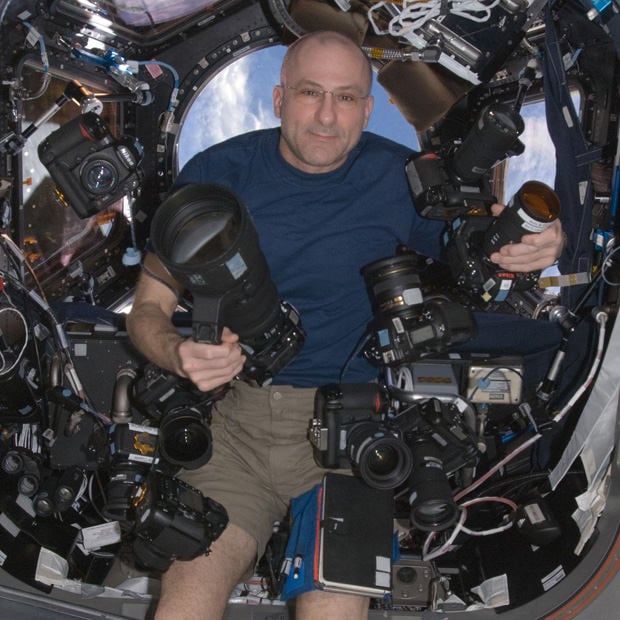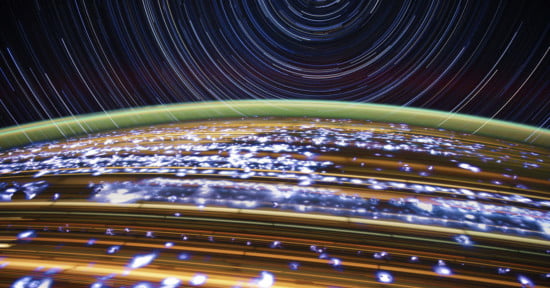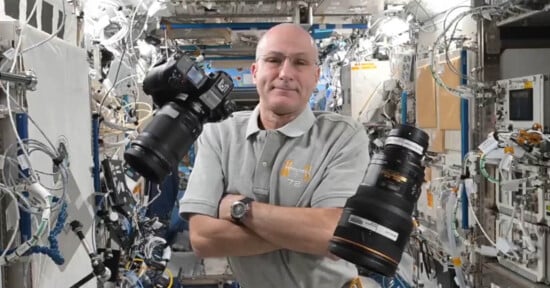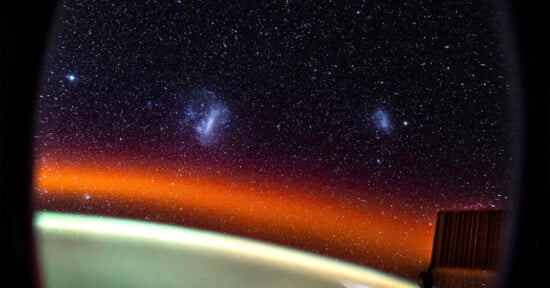NASA Astronaut Don Pettit Uses His Camera for Science in Space
NASA astronaut Don Pettit, known for his incredible astrophotography, sense of humor, and clever camera contraptions, is scheduled to return to Earth this month after a seven-month mission aboard the International Space Station (ISS). Before leaving space, Pettit shared some of the awesome science he has done as part of Expedition 72.
“I come alive when I’m in orbit. It’s like my being should be in space,” Pettit says, while video clips of him taking photos and toying with a camera in zero gravity play. “Some people are born to be cowboys and ride a horse. I’m born to ride a rocket and be in space.”
Pettit describes what he calls “science of opportunity,” which can happen anywhere while doing strict experiments, whether on Earth or in space.
“Because you are there [doing science experiments], and you can, you get an idea,” he says. “It’s not on the script, it’s not part of the program, but you get an idea.”
“So the ‘science of opportunity’ happens anywhere there are people thinking about advancing our knowledge, and the same thing happens on [the] space station.”

Because Pettit is such a talented photographer, people on Earth get to enjoy his creative science experiments, too, including the incredible image above that resulted from an experiment investigating charged water drops in orbit, which behave similarly to how charged particles emitted by the Sun act when they hit the Earth’s magnetic field. Astronauts like Pettit get a fantastic top-down view of the planet’s atmosphere from orbit, providing ample opportunity to study it. Pettit also enjoys witnessing beautiful auroral displays from space, as shown in his aurora borealis timelapse video below.
Another excellent example of Pettit’s “science of opportunity” concerns the International Space Station’s sophisticated freezers. The Minus Eight-Degree Laboratory Freezer for International Space Station (MELFI) is vital for preserving samples that require further analysis on Earth. It also enabled Pettit to freeze fragile ice wafers, which he photographed using a polarizing filter to expose mind-bending crystal structures.
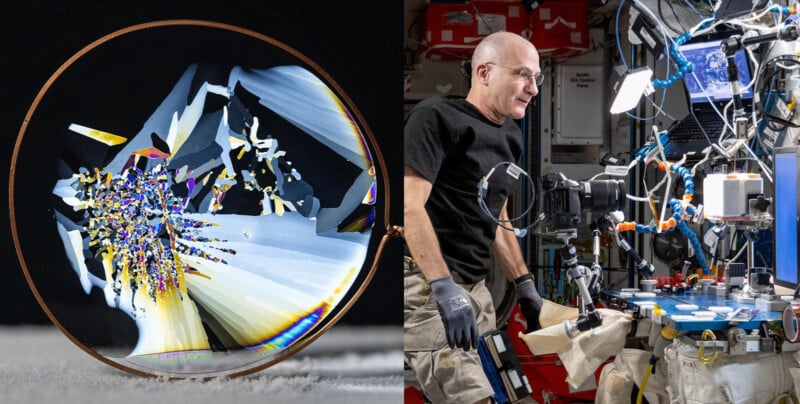
Pettit’s skills behind the camera also make him an ideal candidate to capture various scientific experiments and processes aboard the ISS. The timelapse sequence below shows the Canadarm2 retrieving Materials International Space Station Experiment (MISSE-20-Commercial) samples at the ISS. This mission exposed various experiments to the harsh environment of space, including vacuum pressures, radiation, and extreme temperatures. These experiments are important for designing more durable materials and perhaps even improving quantum communications, and photographic evidence of the experimental processes is a crucial piece of the puzzle.
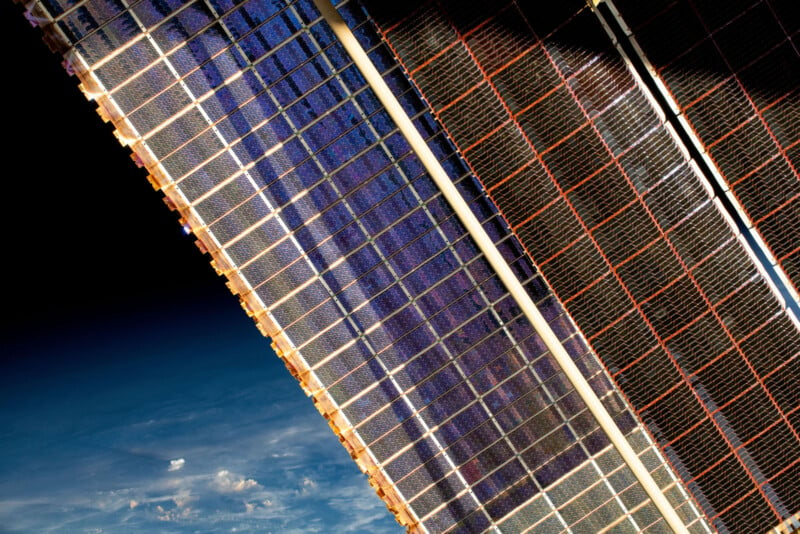
Don Pettit is not just an astronaut, scientist, and engineer — he is an artist. PetaPixel has featured many of his photos over the years, including some he has captured during his most recent and ongoing mission aboard the ISS. NASA highlighted some of Pettit’s most creative new space photos, which are featured below.

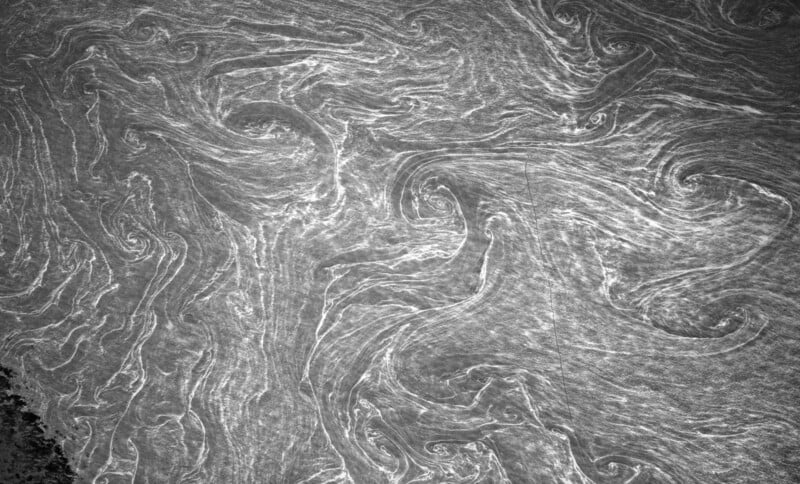

More of Pettit’s remarkable space images — and entertaining musings — are available on X, formerly known as Twitter.
Image credits: NASA, Don Pettit
